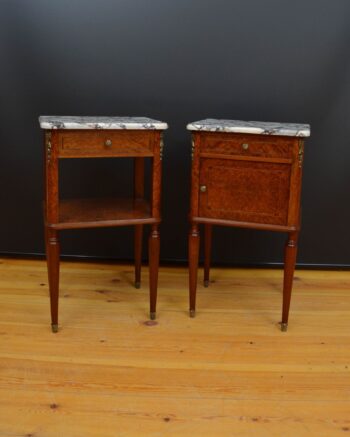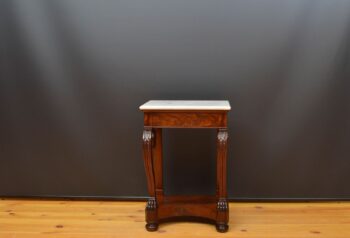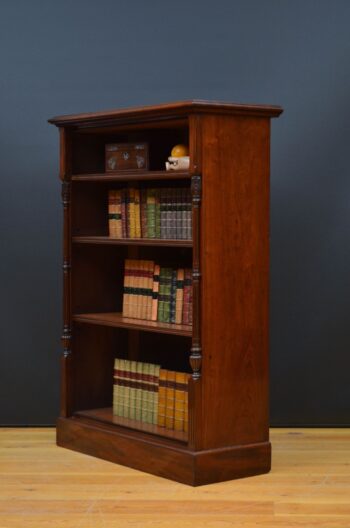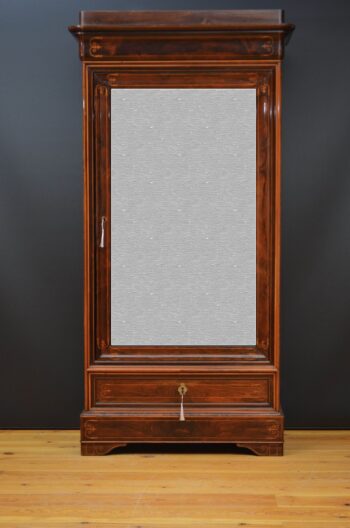Menu

Ideally beeswax, or other another purpose made wax polish, should be used to care for your antique wood. Make sure you avoid a polish with any kind of abrasive quality as this could potentially damage the patina.
Avoid the readily available, cheap, spray polishes, as these can also be very damaging to your fine antiques; as well as harmful to the environment. Your local hardware shop or dealership should be able to advise. And Nimbus are always happy to assist with restoration where possible.
Location within the home is also very important. It is inadvisable to place your antiques in direct sunlight. Especially where it is unevenly distributed; and may cause uneven surface fading. If it is unavoidable, a fabric roller blind, or the like, should effectively block out harsher rays.
Wood is sensitive to humidity and temperature, which is an asset and a curse when looking after your antiques. Anyone who has experienced a sticking door, or stiff wooden draws, knows how dramatically wood can expand with a slight change in humidity and temperature.
It will expand and move with more minor seasonal room changes, but will easily return to its original form. However longer term storage in an excessively damp or dry environment can cause more permanent warping and damage.
So it is important to invest in a dehumidifier if the room is damp. If the room is dry and hot, from excessive central heating for example, a bowl of water can be placed near to the antique piece, or a humidifier used in more extreme cases. Or when an item is particularly rare or delicate. However a bowl of water should suffice.

Metalwork features on wood or upholstery, should not be cleaned with harsh metal cleaning products as these may damage the other materials around the metalwork.
Instead, they should regularly dusted with a dry, clean cloth. Harsh chemicals, polishes, and damp environments, can also cause metal corrosion, as well as damage to wood, or the appearance of upholstery.
If the metalwork is badly tarnished or stained, sometimes ornamental fittings, handles etc, can be removed before cleaning with the appropriate cleaning agent.
However, most likely this is a restoration job. So it is advisable to consult a professional restoration firm such as Nimbus Antiques and Restoration. Items recently purchased from a reputable dealership should not require such attention for some time.
For those into more shabby chic styles, some metalwork corrosion can be quite attractive, and a feature. it can give a weathered and stylish look. But it very much depends on the style of the piece. And is generally is to be avoided.

This very much depends on the piece, and style of frame. It is important to speak to us about aftercare at the time of purchase if you can. All antique mirrors should be cleaned with care, and a non abrasive cleaner used. A lint free cloth should also be used.
Natural solutions such as a water and vinegar solution can make an excellent cleaner for antique mirrors. Taking care to dust the frame, and using only water, or a dry cloth towards the edges. Even natural solutions can potentially cause damage to a delicate frame, so do consult the dealer regarding your particular piece.
Also consult an antique restorer should ‘foxing’ occur. This is where the silver on the back of the mirror has started to deteriorate. Many people like some degree of this, and find it quite attractive, which is down to taste. But a restorer should be able to advise on this.
From long cases to wall clocks, and everything in between. If cared for correctly a fine quality clock should last for many generations to come. It is important to keep your clock going, to avoid its seizing up; which might make it hard to start again without servicing.
If working properly it should have plenty of life in it; and keep going for many years. You don’t need to worry about saving the battery with a wound clock after all!
The dealership will be able to advise you on how to hang and position your clock, and how often to wind it. An 8 day clock, for example, will benefit from winding on the same day each week. Although in theory, they can keep time for a much longer period, up to 14 days. So you don’t need to worry if you miss a day etc. But if you can stick to the same day each week, the piece will keep time for you more accurately.
If you can, avoid a crank key, and over winding, as these put pressure on the mechanism. Handle all parts with care, and try to have a lubrication service every 5-10 years. Which is more affordable than you might think; and certainly easier, cheaper, and less frequent than having to change batteries.
The utmost care must be taken. Always remove any metal jewellery before handling your antiques, or cover such items, as wood and glass can potentially be scratched. Beware of sharp objects generally.
Plan ahead. Whether moving something three feet, or all the way out of the house, always check over the route that you plan to take carefully. Be sure that it’s clean and dry, that the dimensions are wide enough; and that there aren’t any hazardous objects on route. Hazardous to the piece, and hazardous to those carrying it, so that you can avoid dropping the item as well as injury.
If moving house, you may want to employ a professional antique packing and transportation firm. Something to think about if it is a very valuable item. If transporting the item yourself make sure that you have at least three layers of packing material and all doors, glass, drawers etc are secure, or possibly removed. Make sure to provide adequate cushioning and protection in transit.
When moving take extra precautions for glass and mirrors. They should be wrapped in something like glassine, and then layers of bubble wrap, and possibly a special picture box, depending the item’s value. Glass items should be very carefully placed in the removal vehicle in a position with nothing heavy on top of them. Nothing should be able to fall onto them should the vehicle suddenly have to break or take a sharp corner.
Even moving antique furniture within the home can be quite strenuous. So it pays to have some help. The piece should never be dragged. It should be lifted or moved on gliders to avoid damage to the joints and chipping at the base.

We have fun and comprehensive guides to caring for both antique upholstery and antique leather in our Antique Resources.
For further expert guidance, and assistance with antiques restoration, and aftercare do not hesitate to get in touch.
 Pair of Antique French bedside cabinets c1900
£1,650.00
Pair of Antique French bedside cabinets c1900
£1,650.00
 Antique mahogany console table
£2,250.00
Antique mahogany console table
£2,250.00
 Victorian mahogany open bookcase
£1,685.00
Victorian mahogany open bookcase
£1,685.00
 Victorian Walnut Open Bookcase
£1,650.00
Victorian Walnut Open Bookcase
£1,650.00
 Antique French Rosewood Wardrobe or Bookcase
£2,500.00
Antique French Rosewood Wardrobe or Bookcase
£2,500.00
| Cookie | Duration | Description |
|---|---|---|
| cookielawinfo-checbox-analytics | 11 months | This cookie is set by GDPR Cookie Consent plugin. The cookie is used to store the user consent for the cookies in the category "Analytics". |
| cookielawinfo-checbox-functional | 11 months | The cookie is set by GDPR cookie consent to record the user consent for the cookies in the category "Functional". |
| cookielawinfo-checbox-others | 11 months | This cookie is set by GDPR Cookie Consent plugin. The cookie is used to store the user consent for the cookies in the category "Other. |
| cookielawinfo-checkbox-necessary | 11 months | This cookie is set by GDPR Cookie Consent plugin. The cookies is used to store the user consent for the cookies in the category "Necessary". |
| cookielawinfo-checkbox-performance | 11 months | This cookie is set by GDPR Cookie Consent plugin. The cookie is used to store the user consent for the cookies in the category "Performance". |
| viewed_cookie_policy | 11 months | The cookie is set by the GDPR Cookie Consent plugin and is used to store whether or not user has consented to the use of cookies. It does not store any personal data. |